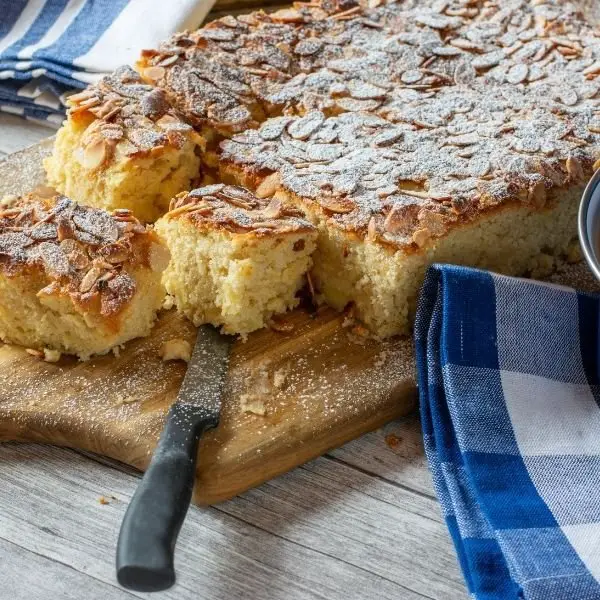When it comes to celebrating birthdays, graduations, and other special occasions, sheet cake is a popular choice. But have you ever wondered about the history of this classic dessert? In this article, we’ll delve into the origins of sheet cake and how it has evolved over time.

Early Cakes
In the Middle Ages, cakes were often made for special occasions such as weddings and religious ceremonies. These cakes were usually small and round, and they were often decorated with elaborate icing and sugar sculptures.
During the Renaissance, cakes became even more ornate. Italian bakers created elaborate tiered cakes that were often served at banquets and weddings. These cakes were often decorated with sugar flowers and other intricate designs.
The Invention of Sheet Cake
The first sheet cake was invented in the early 20th century. Before that, cakes were usually made in round or square pans. But in the 1920s, a new type of baking pan was invented. This pan was rectangular in shape and had higher sides than a regular cake pan.
The new pan was called a sheet pan, and it quickly became popular with bakers. The larger size of the sheet pan made it easier to bake large cakes and to cut them into smaller pieces. It also made it possible to bake cakes in large quantities, which was useful for parties and other large events.
The Rise of the Sheet Cake
In the 1930s and 1940s, sheet cakes became even more popular. Bakeries and restaurants began offering sheet cakes as a more affordable alternative to elaborate tiered cakes. Sheet cakes were also easier to transport, which made them popular for events like picnics and potlucks.
During World War II, sheet cakes became even more important. They were often made with rationed ingredients like powdered eggs and milk, and they were sent to soldiers overseas as a taste of home.
Sheet Cake in America
In the post-war era, sheet cakes became a staple of American baking. They were often made with boxed cake mixes, which made them easy and convenient to prepare. Sheet cakes were also a popular choice for school events and bake sales.
In the 1970s, sheet cakes became even more popular thanks to the publication of the book “The Cake Bible” by Rose Levy Beranbaum. The book included recipes for a variety of sheet cakes, and it helped to popularize the dessert even further.
Sheet Cake Variations
Today, sheet cakes come in a wide variety of flavors and styles. Some popular variations include:
- Chocolate Sheet Cake
- Red Velvet Sheet Cake
- Lemon Sheet Cake
- Carrot Sheet Cake
- Texas Sheet Cake
- Pumpkin Sheet Cake
Sheet cakes can also be decorated in many different ways, from simple icing to elaborate fondant sculptures.
Sheet Cake Today
Today, sheet cakes remain a popular choice for special occasions. They are often decorated with personalized messages and colorful designs. Many bakeries offer custom sheet cakes that can be tailored to the customer’s preferences.In recent years, sheet cakes have also become popular as a canvas for artistic designs. Bakers use buttercream frosting, edible ink, and other techniques to create stunning works of art on the flat surface of a sheet cake. These cakes are often showcased on social media platforms like Instagram and Pinterest, where they inspire other bakers to create their own masterpieces.
Sheet Cake Recipes
If you want to try your hand at making a sheet cake, there are plenty of recipes to choose from. Here is a simple recipe for a classic yellow sheet cake:
Ingredients:
- 2 1/4 cups all-purpose flour
- 1 1/2 cups granulated sugar
- 3 teaspoons baking powder
- 1/2 teaspoon salt
- 1 cup milk
- 1/2 cup vegetable oil
- 1 tablespoon vanilla extract
- 3 large eggs
Instructions:
- Preheat your oven to 350°F.
- Grease a 9×13 inch sheet pan with non-stick cooking spray.
- In a large mixing bowl, whisk together the flour, sugar, baking powder, and salt.
- In a separate mixing bowl, whisk together the milk, vegetable oil, vanilla extract, and eggs.
- Pour the wet ingredients into the dry ingredients and stir until just combined.
- Pour the batter into the prepared sheet pan and smooth the top with a spatula.
- Bake for 30-35 minutes, or until a toothpick inserted into the center of the cake comes out clean.
- Let the cake cool in the pan for 10-15 minutes, then remove it from the pan and let it cool completely on a wire rack.
Once your sheet cake is cool, you can frost it with your favorite icing or decorate it with colorful sprinkles.
FAQs
A sheet cake is baked in a larger, rectangular pan and typically has a thinner layer of cake than a regular cake. Sheet cakes are also often cut into smaller pieces, while regular cakes are usually served as whole rounds or squares.
A sheet cake can be stored in the refrigerator for up to a week or in the freezer for up to three months.
Yes, many boxed cake mixes are specifically designed for sheet cakes. Simply follow the instructions on the box and bake the cake in a sheet pan instead of a round or square pan.
Chocolate sheet cake is one of the most popular types of sheet cake, but there are many other flavors to choose from as well.
Yes, fondant can be used to decorate a sheet cake just like a regular cake. However, because sheet cakes are flat, they may not be the best choice for elaborate 3D fondant sculptures.
Conclusion
Sheet cake has a rich history that dates back centuries. From the ornate cakes of the Renaissance to the simple sheet cakes of the 20th century, this classic dessert has evolved over time to become a beloved staple of American baking. Whether you prefer a classic yellow sheet cake or a creative masterpiece, there is no denying the appeal of this versatile and delicious dessert.
